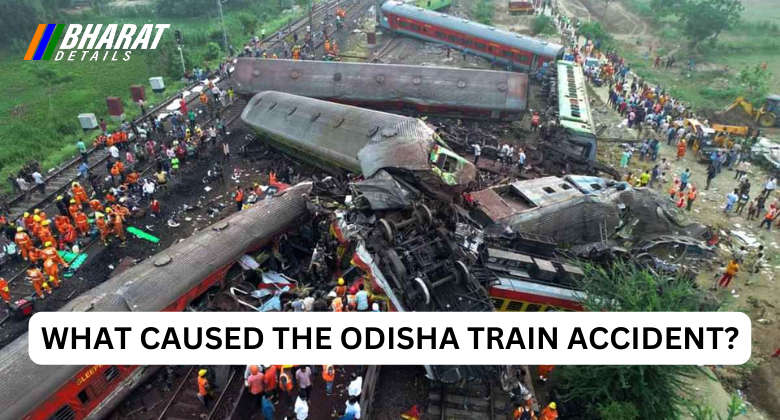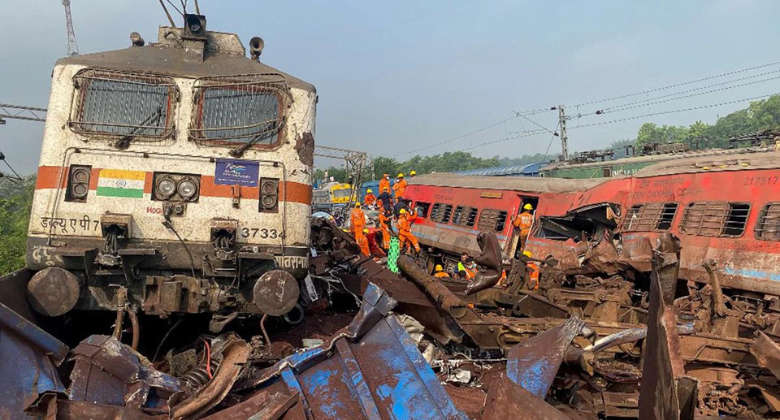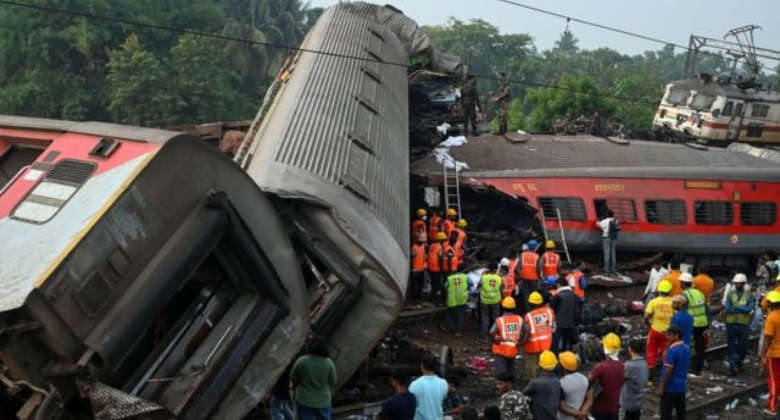What Caused the Odisha Train Crash? Here’s What We Know

Nearly a day has passed since the tragic railway accident at Odisha’s Bahanaga Bazar station, yet the exact cause remains uncertain. Despite the rising death toll of 288 and over 800 reported injuries, the Railways’ official statement has been brief and lacking in crucial details.
Here’s what we currently know about the incident, based on information provided by Railway sources. However, a comprehensive understanding can only be achieved through an official inquiry, which is yet to take place. We eagerly await a more comprehensive statement from the Railways.
When and where did the accident occur?
The collision transpired just before Bahanaga Bazar station in Odisha’s Balasore district. This district falls under the Kharagpur railway division of the South Eastern Railway. Three trains were involved in the incident: two passenger trains traveling in opposite directions and a stationary goods train.
The initial train involved was the 12841 Coromandel Express, which commenced its journey from Shalimar station in Kolkata/Howrah and was bound for Chennai. It had successfully passed through Kharagpur and Balasore, with its upcoming destination being Bhadrak. The train was operating on schedule and was scheduled to pass Bahanaga Bazar without making a stop, around 7:01 pm.

How are the tracks arranged at Bahanaga Bazar?
The railway tracks at Bahanaga Bazar comprise an Up Main Line (heading towards Chennai), a Down Main Line (heading towards Howrah), and two loop lines on either side. Loop lines serve the purpose of accommodating a parked train to ensure the main line remains clear for faster or more significant trains.
As the Coromandel Express approached, one of the loop lines was occupied by a goods train traveling in the same direction (Up). The Coromandel Express was expected to proceed past the goods train on the main line.
As per the concise update provided by the Railways, the incident involved the “Up Train No. 12841” (known as Coromandel Express), which was traveling on the Up Main Line. Tragically, it collided with a stationary Goods Train positioned on the Up Loop Line. The Coromandel Express was running at full speed through the station since it was not scheduled to make a stop.
Based on the information given, it is evident that instead of continuing on the main line, the Coromandel Express accidentally entered the loop line and crashed into the rear of the goods train. Images captured at the scene depict the locomotive of the Coromandel Express resting atop the goods train.

The locomotive drivers primarily rely on signals rather than visual cues on the tracks, especially during nighttime. While the exact details will be revealed during the investigation, sources familiar with the matter have informed The Indian Express that the Railways are considering the possibility of a signaling mistake.
A comprehensive joint inspection carried out by supervisors from various disciplines has concluded that initially, a green signal was given to the Coromandel Express, allowing it to proceed on the designated main line. However, the signal was subsequently withdrawn. Unfortunately, the train entered the loop line instead of staying on the main line, leading to the collision with the goods train.
According to a report prepared by the joint inspection team, they carefully observed the situation and determined that the signal was indeed given and then taken off for the Up main line meant for train number 12841. However, the Coromandel Express entered the Up loop line instead, resulting in the collision with the goods train and subsequent derailment.
Railway officials are actively investigating the possibility of both signaling errors/failures and the role of the train driver, commonly referred to as the “loco pilot” in the Railways, according to a reliable source.
However, it is important to acknowledge that trains are massive structures made of steel, propelled by immensely powerful engines. As per the railway briefing, the Coromandel Express was traveling at “full speed,” estimated to be around 100 km/hr. Even with the application of emergency brakes, a train of that magnitude would require a considerable distance, possibly a couple of kilometers, to come to a complete stop.

Now, let’s address the involvement of the third train in this incident. Simultaneous to the Coromandel Express colliding with the goods train, another train known as the 12864 Sir M Visvesvaraya Terminal Bengaluru-Howrah Express was passing on the adjacent Down main line, heading towards Howrah in the opposite direction. The majority of this train had already passed the accident site when the Coromandel Express collided with the goods train. However, the impact affected the last few coaches of the Sir M Visvesvaraya Terminal Bengaluru-Howrah Express. These coaches either derailed due to being struck by the overturned coaches of the Coromandel Express or due to the shockwaves that could have propagated through the ground and tracks.

